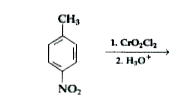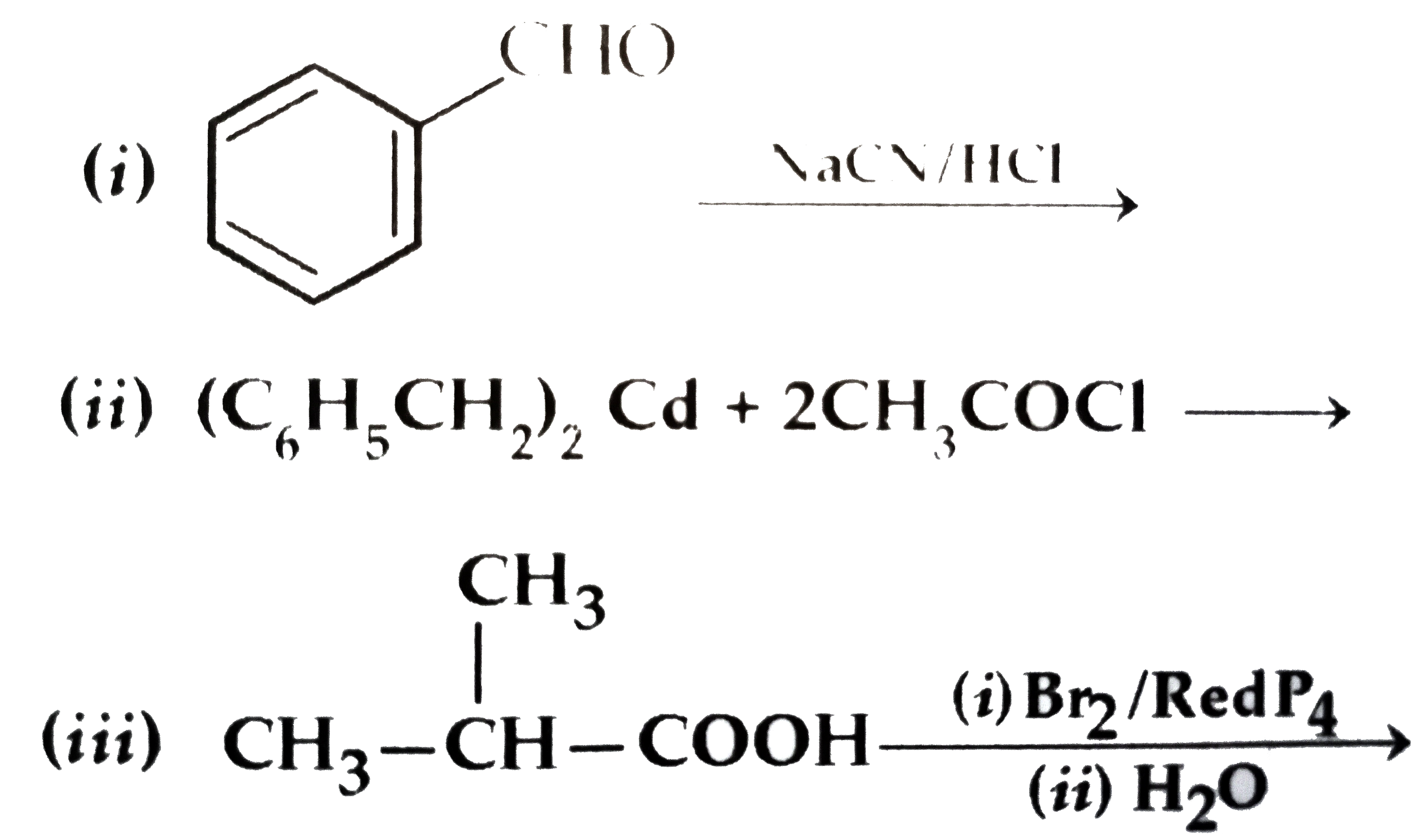Reaction between (C2H5)2CdandCH3COCl leads to the formation of
Diethyl ketone
Ethyl methyl ketone
Dimethyl ketone
Acetaldehyde
The correct Answer is:B
To solve the problem regarding the reaction between (C2H5)2Cd (diethylcadmium) and CH3COCl (acetyl chloride), we will follow these steps:
Step 1: Identify the Reactants
The reactants in the reaction are:
- Diethylcadmium (C2H5)2Cd
- Acetyl chloride CH3COCl
Step 2: Understand the Nature of the Reactants
Diethylcadmium is a nucleophile because cadmium (Cd) has a partial positive charge, and the ethyl groups (C2H5) carry a negative charge. Acetyl chloride contains a carbonyl group (C=O) which is electron-deficient due to the electronegativity of oxygen.
Step 3: Nucleophilic Attack
The nucleophile (the ethyl group from diethylcadmium) will attack the carbonyl carbon of the acetyl chloride. The carbonyl carbon is electrophilic due to the partial positive charge created by the electronegative oxygen.
Step 4: Formation of a Tetrahedral Intermediate
When the nucleophile attacks the carbonyl carbon, it forms a tetrahedral intermediate. This intermediate will have a negative charge on the oxygen atom.
Step 5: Elimination of Chloride Ion
The tetrahedral intermediate will then collapse, leading to the elimination of the chloride ion (Cl⁻) from the acetyl chloride. This results in the formation of a ketone.
Step 6: Identify the Product
The product formed from this reaction is ethylmethylke→≠, also known as butan−2−o≠. The structure can be represented as:
- Ethyl group (C2H5) on one side
- Methyl group (CH3) on the other side
Final Product
Thus, the final product of the reaction between (C2H5)2Cd and CH3COCl is ethyl methyl ketone (or butan-2-one).
---
The reactants in the reaction are:
- Diethylcadmium (C2H5)2Cd
- Acetyl chloride CH3COCl
Diethylcadmium is a nucleophile because cadmium (Cd) has a partial positive charge, and the ethyl groups (C2H5) carry a negative charge. Acetyl chloride contains a carbonyl group (C=O) which is electron-deficient due to the electronegativity of oxygen.
The nucleophile (the ethyl group from diethylcadmium) will attack the carbonyl carbon of the acetyl chloride. The carbonyl carbon is electrophilic due to the partial positive charge created by the electronegative oxygen.
When the nucleophile attacks the carbonyl carbon, it forms a tetrahedral intermediate. This intermediate will have a negative charge on the oxygen atom.
The tetrahedral intermediate will then collapse, leading to the elimination of the chloride ion (Cl⁻) from the acetyl chloride. This results in the formation of a ketone.
The product formed from this reaction is ethylmethylke→≠, also known as butan−2−o≠. The structure can be represented as:
- Ethyl group (C2H5) on one side
- Methyl group (CH3) on the other side
Thus, the final product of the reaction between (C2H5)2Cd and CH3COCl is ethyl methyl ketone (or butan-2-one).
Topper's Solved these Questions
Similar Questions
Knowledge Check
The reaction of C2H5OC2H5 with BF3 leads to the formation of
A(C2H5)2+BF2¯¯¯OFB(C2H5)2+O−¯¯¯BF3C(C2H5)2¯¯¯O−+BF3DC2H5PBF2 and C2H5FCalculate the heat of hydrogenation ,
C2H4(g)+H2(g)→C2H6(g)
Given that, the heats of combustion of ethylene, hydrogen and ethane are -337.0, -68.4 and -373.0 kcal respectively.A−32.4 kcalB−36.3 kcalC−37.8 kcalD39.2 kcalReaction
CH3COOH+C2H5OH→CH3COOC2H+H2O is an illustration ofAdehydrationBesterificationCneutralizationDdehydrogenation
Distinguish between : (ii) C6H5COCH3andC6H5CH2CHO.
View SolutionComplete the following reactions:
C6H5CH2)2Cd+2CH3COCl→
View SolutionWrite the structures of products of the following reactions :
(i)
(ii) (C6H5CH2)2Cd+2CH3COCl→
(iii) H3C−C≡C−HHg2+,H2SO4−−−−−−−−→

View Solution(a) Write the structures of A and B in the following reactions :
(i) CH3COClH2,Pd−BaSO4−−−−−−−−−→AH2N−OH−−−−−−→B
(ii) CH3MgBr1.CO2−−−−−−−→2.H3O+APCl5−−→B
(b) Distinguish between :
(i) C6H5−COCH3 and C6H5−CHO
(ii) CH3COOH and HCOOH
(c) Arrange the following in the increasing order of their boiling points :
(i) CH3CHO,CH3COOH,CH3CH2OH
View SolutionThe reaction
H2C=CH−CH3+CI2673K−−→H2C=CH−CH2CI
proceeds through the intermediate formation of a :
View Solution

